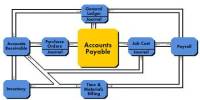The introduction of the current purchasing power (CPP) method is one of the greatest revolutions in the field of accounting. C.P.P. is also known as General Price-Level Accounting. This method adjusts historical cost for changes in the general level of prices as measured by the general price-level index. Under the CPP method, any established and approved general price index is used to convert the values of various items in the balance sheet and profit and loss account.
Characteristics of CPP Method
(1) A supplementary statement is prepared and annexed to the historical financial statements. The supplementary statement includes a re-statement of the income statement and a re-stated balance sheet.
(2) Any statement prepared under the CPP method is based on the historical statement.
(3) Consumer price index or wholesale price index is used as a conversion factor for re-stated historical items.
(4) All the items in the financial statements are classified into monetary and non-monetary items. Non-monetary items are adjusted, there is no need for any adjustment for the monetary items.
(5) Net gain or loss account of monetary items is to be accounted for in the profit and loss account.
(6) This is a mixed-method in which financial statements are prepared on a historical basis these statements, in the end, are converted on the current purchasing power of the currency.
(7) Measurement of financial transactions in terms of constant purchasing power does not necessarily imply a major change in established accounting principles. However, constant purchasing power adjustments may also be applied in accounting systems based on replacement or current costs.
It involves the restatement of some or all of the items in the historical financial statement for changes in the general price level. For this purpose, the approved price index is used to convert the various items of historical financial statements.
This method helps to present the financial statements in terms of units of equal purchasing power. Furthermore, the term ‘C.P.P. accounting’ will be used in this generally accepted manner. Nonetheless, it should be remembered that in its widest interpretation C.P.P. accounting is not a simple alternative to current-cost accounting — the two methods are not mutually exclusive.
















